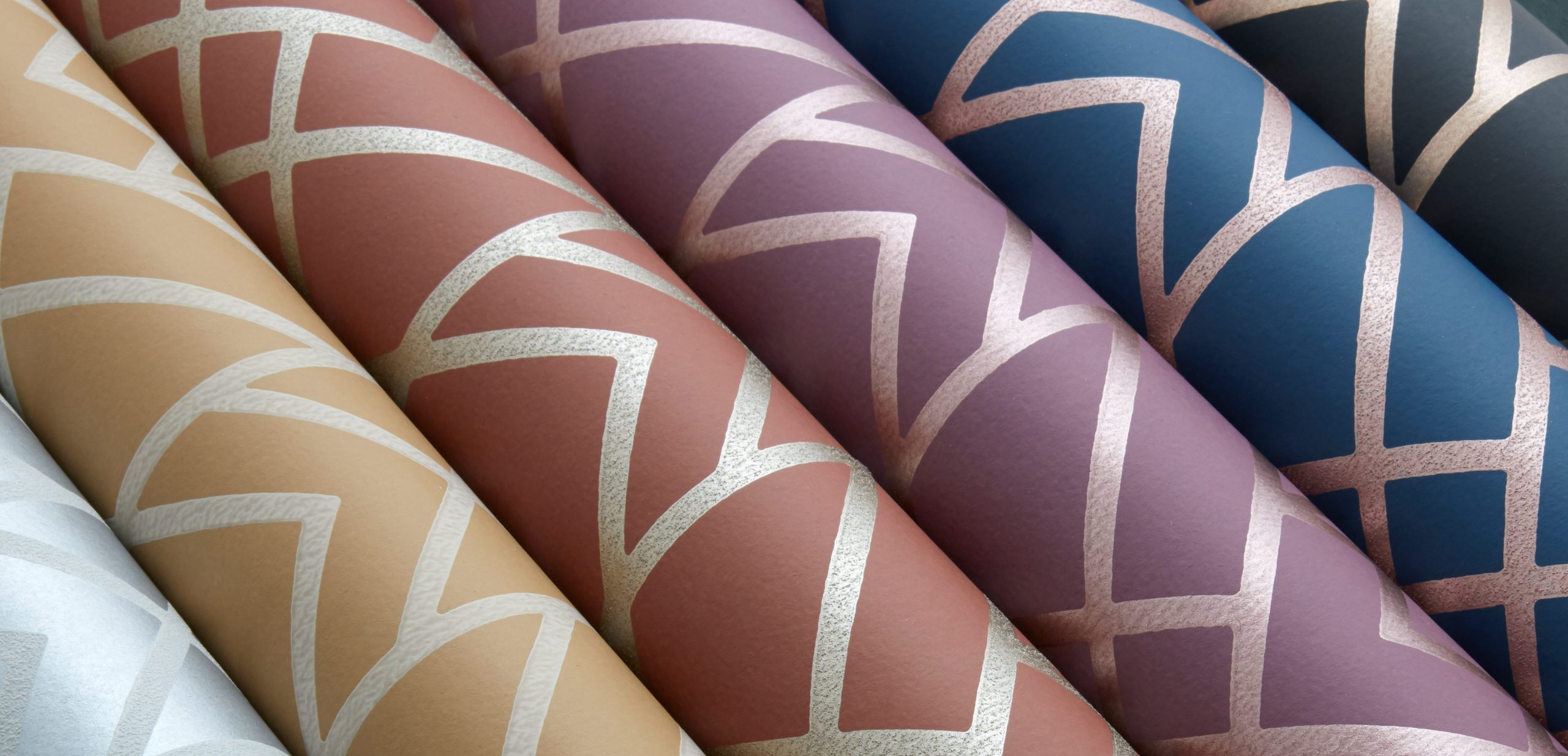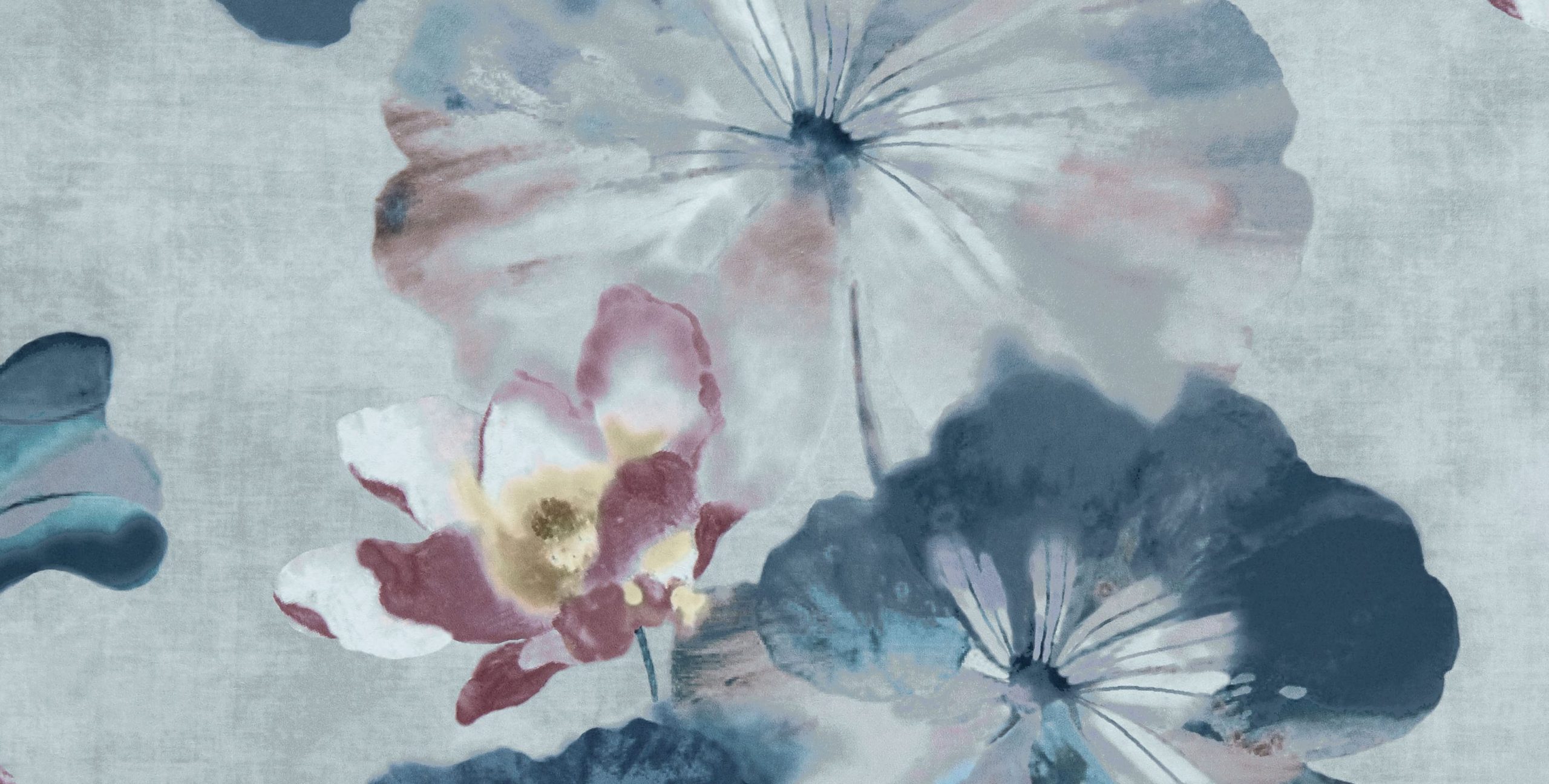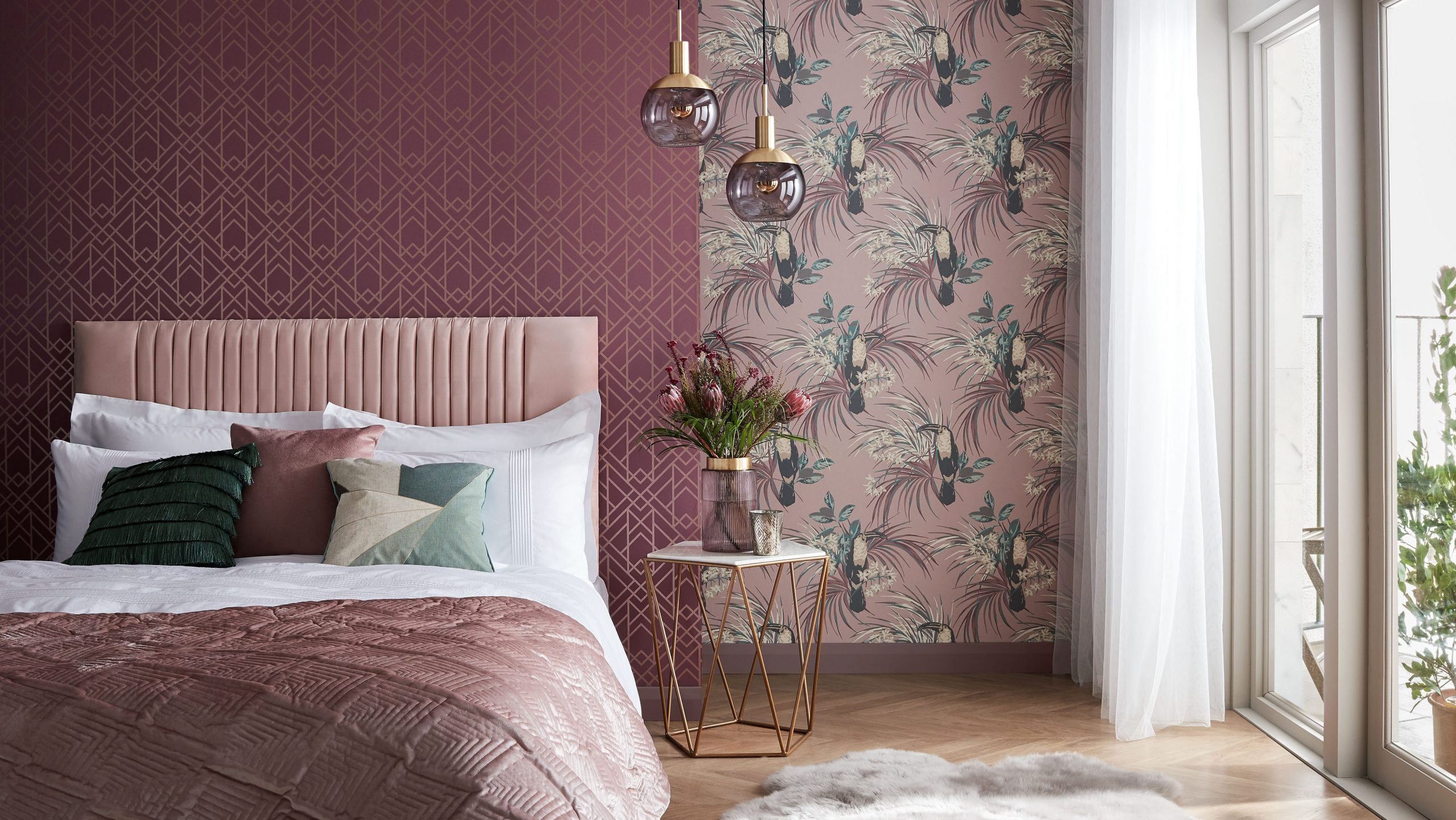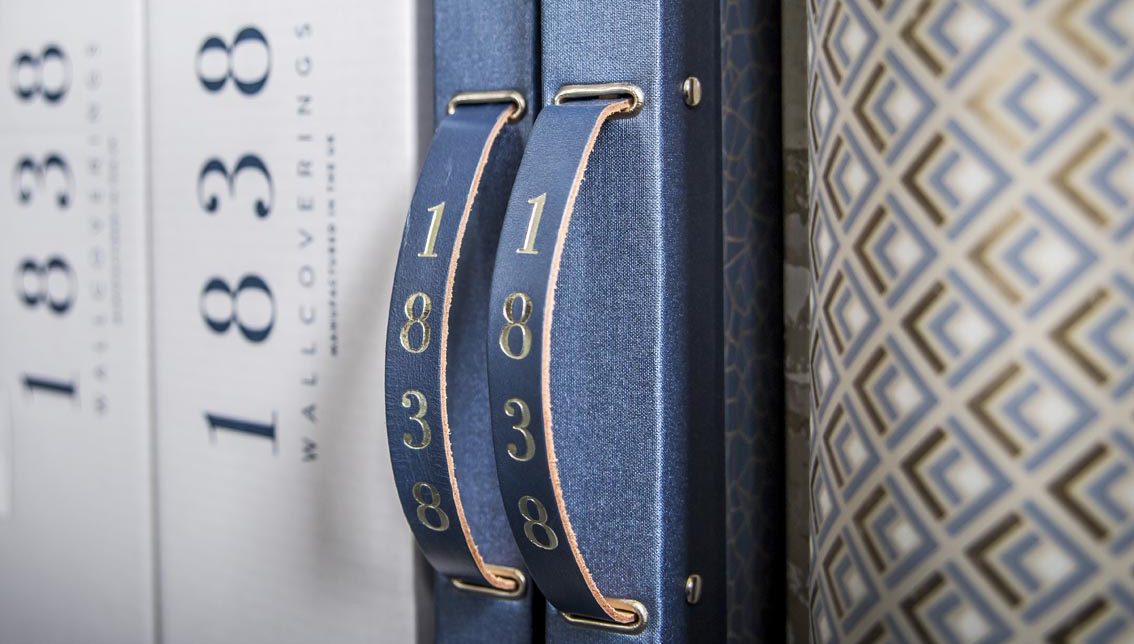Inspiration
Surface Print Technique
 The Surface Print technique was developed in the 1830’s, to replicate hand block printed wallpaper. It was in Darwen, Lancashire where this ground breaking wallpaper printing technique was developed.
The Surface Print technique was developed in the 1830’s, to replicate hand block printed wallpaper. It was in Darwen, Lancashire where this ground breaking wallpaper printing technique was developed.
Charles Potter, was a partner in his father’s calico printing business, he was very interested to see if wallpaper could be printed onto calico mechanically. Charles adapted a calico printing machine in their Darwen factory and in 1838 ran successful trials of Surface printing onto paper.
Surface printing has very recognisable characteristics as a printing technique, the thickness of the inks leave a recognisable hand blocked esque print mark on the paper.
Surface printing is achieved by engraving a design onto rollers. Early rollers were made by engraving wood; today these are engraved into a hard compound rubber. The ink transfers to the engraved roller which lays down the ink onto the paper creating the design. The surface underneath the paper is soft, this is what gives the beautiful print mark and unpredictability of how the inks will transfer, part of the charm of the technique and becoming an integral part of the design. There is no drying time in-between rollers pressing down onto o the paper, this means that sometimes where inks meet there can be a slight bleed, adding to the appearance of a handcrafted product.
The vast range of 1838 wallcoverings are printed using the Surface printing technique, here in our own factory in Lancashire, only 10 miles away from where the technique was developed. At Surface Print we are proud to own 4 of a remaining 12 surface print machines still in existence in the world.
Although the machine is mechanical, so much of the process is still done by hand. We still mix all colours by eye and hand coordination, using the skills of craftsmen that have years of experience. 1838 is in the fortunate position in that Surface Print lead the wallpaper industry with innovation of techniques to achieve a contemporary twist on a traditional product.














